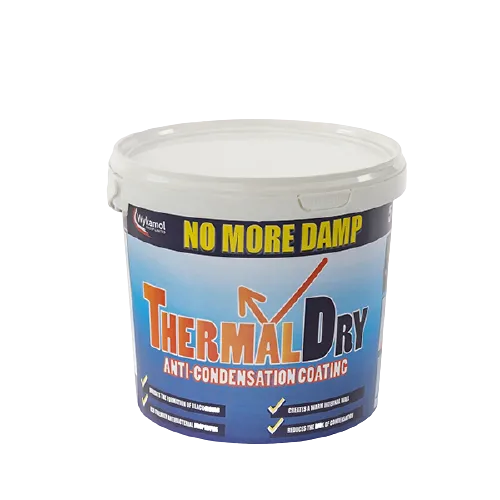Last Updated on July 1, 2024 by Ferg
Insulation paint, also known as thermal insulation paint, is a specialized coating designed to enhance the thermal insulation properties of the surfaces that it’s applied to. Unlike traditional insulation materials like foam or fiberglass, insulation paint works by forming a barrier that reduces heat transfer through walls and roofs. This innovative product offers a cost-effective solution for improving energy efficiency in buildings while providing a seamless application that can easily regulate indoor temperatures and reduce energy consumption.

What is thermal insulation paint?
Thermal insulation paint is a decorative coating that helps to increase the thermal efficiency when applied to the building envelope, which consists of interior walls, foundation, roof, or windows. While this type of paint insulation is a relatively new technology, it’s designed to reduce heat absorption in hotter climates and minimize heat loss during the colder seasons, which makes thermal insulation paint great for indoor temperature control. Embedded with microscope hollow ceramic and glass spheres, this heat insulation paint creates a protective layer that reduces the passage of heat into a building, improving energy efficiency.
While this application is not a replacement for proper insulation, its cost-effectiveness makes it a very appealing choice for both residential and commercial properties that are in need of insulation upgrades without the need for extensive construction work.
How does insulation paint work?
Insulation paint, whether used for interior or exterior walls, functions by creating a thermal barrier that helps regulate heat transfer. Insulation paint for interior walls works by forming a thin layer to reduce heat conduction through the wall surface. This helps in maintaining stable indoor temperatures by minimizing any heat loss during winter and heat gain during summer. Due to its ability to reflect heat away from the surface through its composition, it’s also commonly referred to as heat insulation paint.
Needless to say, exterior insulation paint serves a similar purpose to insulation for interior walls, however, this type of insulation paint is better for withstanding outdoor conditions. It acts as a protective shield against various weather elements while providing thermal resistance to the building envelope.
Both types of insulation paint enhance energy efficiency by reducing workload on heating and cooling systems, thereby lowering energy consumption costs.

Best insulation paint for interior walls
The best insulation paint for interior walls are thermal insulation paints that are specifically designed for reducing heat transfer through walls. These paints are formulated with ceramic microsphere additives, which enhances their thermal resistance. Providing a comfortable indoor temperature year-round, thermal insulation paint is easy to apply and offers a seamless finish that doesn’t alter the aesthetic of your walls.
Now that you’re equipped with the knowledge about how insulation paint on interior walls works, it’s time to purchase a product that performs. Our speciality thermal dry insulating paint is tailored for interior walls, ensuring that with good coverage, will greatly increase your insulation levels. With just the right durability to withstand the wear and tear of external moisture attempting to enter your home through outside walls, this product prevents wall defects and maintains the performance and appearance of your surfaces.

How to use our thermal dry insulating paint
Using insulation paint for walls is relatively easy but significantly enhances the thermal efficiency of your walls.
Before applying, ensure that the walls are clean and dry to maximize the adhesion and effectiveness of the product. Once the surface of the area is clean, you can stir the thermal dry insulating paint thoroughly to ensure that when distributed, it has an even consistency. Apply the paint according to the recommended coverage rate and be sure to use a high-quality paint roller or brush on your wall surfaces. Allow the first coat to completely dry before applying additional coats. When everything is dry, you can inspect the walls for any missed spots and touch up where needed to provide that seamless finish.
Where to buy insulation paint
While most home improvement stores insulation paint for exterior walls, thermal insulation paint for interior walls is more specialized by all local distributors. To ensure that you have the correct product to prevent penetrating damp caused by an external source of moisture through a wall on your property, be sure to buy thermal dry insulating paint to enhance the performance of your interior and exterior walls.
Frequently Asked Questions
Does insulating paint actually work?
Insulating paint can provide some thermal resistance by creating a barrier against heat transfer through walls. However, its effectiveness varies depending on the product and application. If you want to ensure that your thermal insulation paint for interior walls is top-notch, grab hold of our “thermal dry insulating paint” for optimal performance.
Where can I buy thermal insulation paint in Dublin?
While The Damp Store is your best choice for products that specialize in moisture control and insulation, you can also purchase thermal insulation paint at hardware stores like B&Q or Woodie’s in Dublin.
What is the recommended paint for heat insulation?
Thermal insulation paint for walls is always recommended when looking to properly insulate interior and exterior walls.
How does thermal insulation paint work?
Through additives like ceramic microspheres, thermal insulation paint for walls reduces heat transfer. When applied, it forms a thin, insulating layer that helps to regulate indoor temperatures.
How to make external walls warmer?
To make external walls warmer, apply exterior insulation paint to form a thermal barrier and reduce heat transfer. Additionally, you can improve insulation by adding weather-stripping around doors and windows.


Hi, can your product thermal dry paint be used on concrete floors, My walls and ceilings are very well insulated but my floors have no insulation, if so can I put my laminated floor over it. I am hoping to stop condensation from forming on the floors. Thanks
Hi Joe,
Unfortunately the spec doesn’t cover usage on floors. I’d expect the material to wear down quicker.
I would check out the thin silver foil insulation for floors as a workaround, but otherwise, it’s difficult to insulate properly without the depth required.